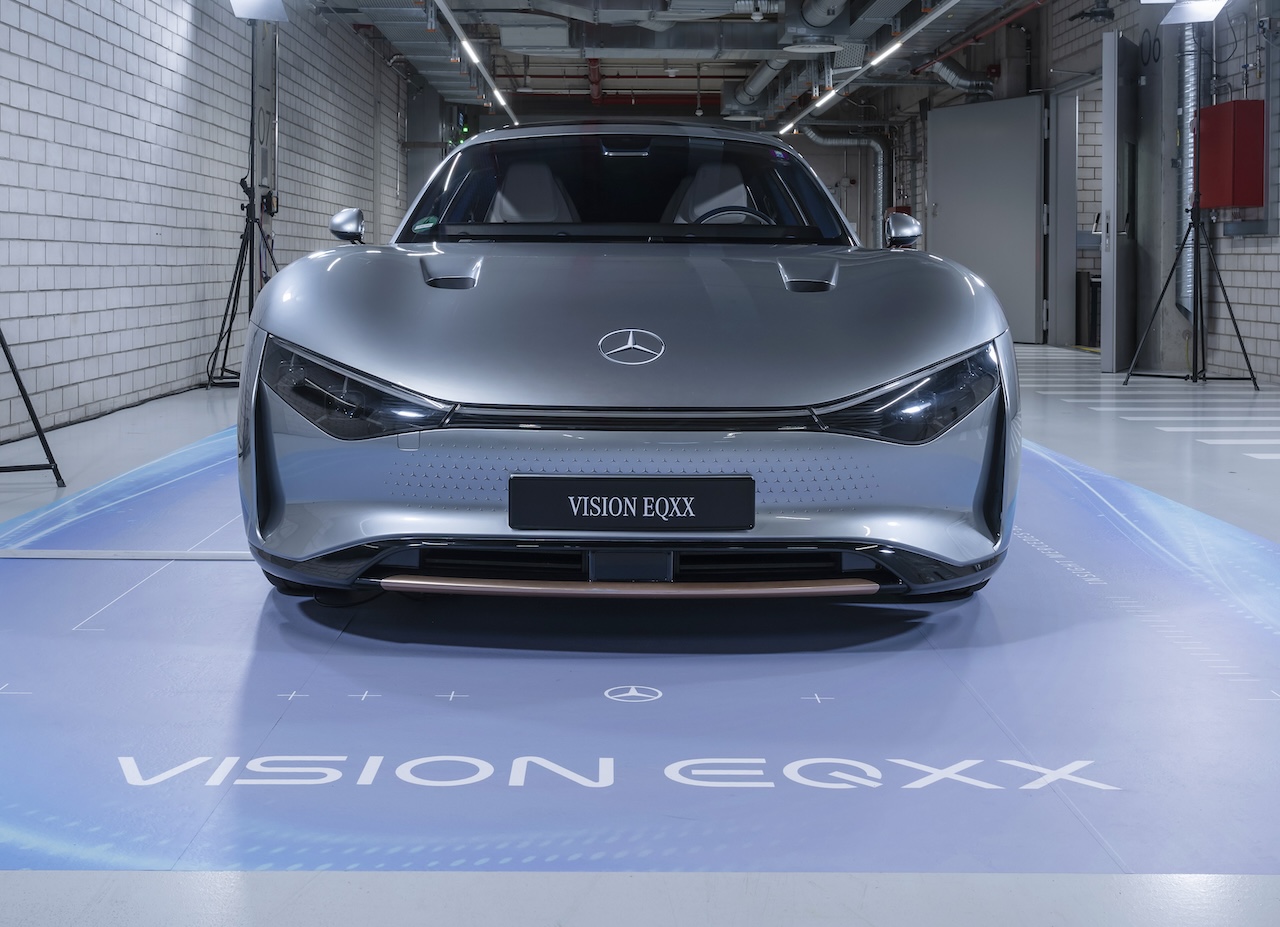the solar paint contains no rare earth elements or silicon. The material is made from non-toxic, readily available raw materials and is recyclable. It is also significantly cheaper to produce than conventional solar modules.
Sounds a bit too good to be true.
it is too soon to know if the solar paint will make it to production
If it is so good, why? My guess it’s still in the vague concept stage and not even near actual testing with a moving car.
It is also significantly cheaper to produce than conventional solar modules.
If they had that they wouldn’t need to put it in cars to make a lot of money.
R&D is expensive.
Article says it was tested for 12 month and provided 60% of the energy needed for the commute each day.
Without doing the math, that means they’ve broken several barriers in solar panel development, and this paint is more efficient than regular solar panels. If true, these guys aren’t a car company any more, they are a solar company.
And the absolutely last thing we should be painting with this stuff is a vehicle that will likely spend much of its time inside a garage. If this breakthrough technology truly exists we should be painting all kinds of other things with it instead including currently existing solar panels apparently.
Gotta start somewhere and it’s probably really hard to pitch expensive paint as a solution. If cars with solar paint take off, the prices come down substantially…and if it goes on a fancy car, it’s got the cool factor now
Without doing the math, that means they’ve broken several barriers in solar panel development,
I’m borrowing this from elsewhere, but someone has done the math and says it works out.
The typical daily driven distance is only around 50 km or 30 miles, EV consumption is around 4 mpkWh so that’s sound 7.5 kWh to recover in LA it’s 9 hours average sunshine per day. So we need to collect solar energy at a rate of 830 W.
At 25% it’s 3.4 kW solar radiation.
Solar intensity in LA is only around 300 W/m2
So you need 11 m2 coverage.
Yeah I’m gonna call bullshit on this one, no way they’re acheiving 20% efficiency with paint. There’s also almost no info on what this paint is and how it’s supposed to work. And, of course, a revolutionary technology like that could make them billions if used for more “normal” solar generation.
The paint thickness they reference here is 5 micrometers, a tenth of the thickness of human hair. If covering a car with this is enough to power an average day’s journey in sunny climates, why not paint everything with it? Buildings, garden walls, etc?
Our near future lives may be both energy rich and energy independent. As the meme says, ‘Petro-states hate this one simple trick …’
We don’t do that because this won’t work. If it’s too good to be true, it’s not true.
This sounds too good to be true, but if it is true, then that is a really interesting thing.
Yeah this is total BS.
The sun delivers about 1.3kW of energy per square meter and an average car takes up about 8 square meters of space. So that’s about 11kW to work with, but even very efficient solar panels only harvest about 20% of that. So that leaves us with about 2.2kW to work with. Now in order to convert that energy into something usable and charge the battery, more losses are added, depending on the situation this would be around 20%, leaving 1.76kW. This means charging a 50kWh battery would take around 28 hours. Obviously we can only expect around 6 hours of really good sun on an average day, with the rest of the day having much less energy available. So charging the car would take several days in perfect conditions. If it’s cloudy, if it’s raining, if you’ve got shade over the car, if you drive the car etc. it will take more time to charge it.
In reality however, this is with modern commercial grade equipment, oriented perfectly to the sun at the proper angle. Putting that in a car isn’t possible. Stuff is going to get hot, which leads to reduced efficiency, active cooling costs energy so that’s probably not a good solution. The car isn’t going to have all of it’s surface facing the sun, by definition a part of it is going to be in it’s own shade. If the sun is perfectly overhead for max efficiency on the roof, the sides aren’t going to get anything. Angles are going to be wrong and people prefer to park their cars in the shade or under cover. Cars also tend to be used, so they get pretty dirty driving around, that reduces efficiency further. So if they get half of what I described, they would be doing real good. Just takes a week to charge the car, but still, doing good.
But then there’s the real kicker. It isn’t possible to get anywhere near 20% out of a paint or surface finish. Modern solar panels have many tricks to get their efficiency as high as 20% (and even nearing 30% with the newest techniques, but that isn’t commercially viable at the moment). Solar paints are way worse and do badly even in perfect lab settings. One of the issues is the energy generation isn’t as optimal to begin with, but another issue is getting the energy transported out of the material is problematic. This leads to efficiency numbers in the 1% range. This means going from charging in a week, it will take months, if it charges at all.
Except for niche use cases, putting solar on anything except roofs usually makes no sense at all. It’s handy for camping, on top of the RV or for example on a boat, where having a little bit of DC is handy when no other sources is available. But when there is a roof available, just put it on the roof and use the power from there.
Well, “they did the math”. If you read the article, they’re saying 32km/day in Stuttgart and 47/day in LA, and then extrapolating to 55/day in Australia. This is from their practical trials.
The kicker to the kicker is that they are claiming >20% efficiency here. It’s apparently a very revolutionary new paint. The main thing they didn’t cover is how fast it degrades, which has been a huge problem with perovskite-based systems like I bet this is.
Yeah I don’t really see how that’s possible. Even if you get a material that’s able to harvest at 20% efficiency, getting the energy out is a big issue. It’s a lot of power and transporting it through a layer a few micron thick is very rough and leads to huge losses.
I also don’t know what “math” they actually did. I think it was some back of the napkin extrapolations and not actual data. For example they state: “one scientist suggested covering an entire car with the new solar paint, ramping up the surface area to more than 11m2” That leads me to believe they didn’t actually do anything but were just extrapolating and speculating for the press.
They also state: “scientists hardwired the body panels to the Benz’s high-voltage battery”. This makes zero sense. In order for energy to flow from a solar panel into for example a battery, the voltage of the panel needs to be higher than the voltage of the battery. Otherwise the current will flow in the wrong direction. But Mercedes EQS batteries run at 400 volt, you can’t connect “directly” to the battery unless you want the panel to explode and the car to catch fire. And even if you connect it directly into some charger system that can convert the voltage from the panel into something the battery can use to charge, you wouldn’t want to do it like that. Including a voltage optimizer in the system is key for getting efficiency out of a solar panel.
I think some journalist misunderstood some Merc tech demo and made up this BS story.
“They” here was you. You did the math. That was a bit ambiguous, sorry.
Journalistic misunderstanding is possible, I guess. There’s no way it’s just a wire to the high-voltage motor output - it doesn’t trickle charge off the grid directly either - although omitting the charging system is arguably more of a wording choice.
Here’s another one where they go into more detail, and even mention the possibility of perovskites independently: https://newatlas.com/automotive/mercedes-benz-solar-paint/
Unfortunately the press release itself doesn’t seem to be accessible, after a quick search.
I don’t think Mercedes-Benz would straight up lie, and there’s no wiggle room in the way they’re wording things, so this is kind of a big deal. That said, there’s no comment on how long the coating lasts.
deleted by creator




